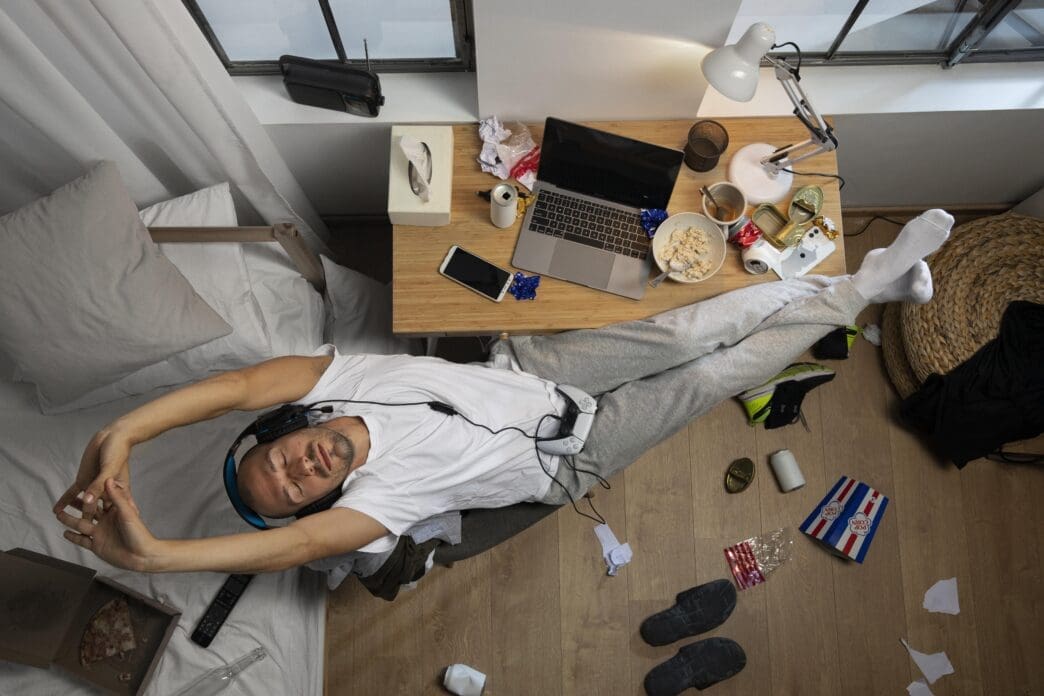You know the feeling. After a grueling workday filled with endless meetings and demanding tasks, you finally step into your home and feel an overwhelming urge to let it all out. It’s as if a floodgate of emotions opens, and you just want to scream or hide under the covers. Ever felt that way? Well, you’re not alone.
This phenomenon, often termed ‘post-work restraint collapse,’ is gaining recognition as more adults identify with the feeling of being completely spent after the workday ends. But what exactly triggers this emotional overload, and how can you tell if you’re experiencing it? Let’s explore the ins and outs of this all-too-common experience and discover how to navigate it.
Understanding the Roots of Post-Work Restraint Collapse
Picture this: juggling a demanding job, striving for a healthy work-life balance, managing emotions, and meeting deadlines—all while maintaining a smile. It’s a recipe for exhaustion. Jenny Maenpaa, a psychotherapist, explains that in our modern world, we’re expected to excel at work, enjoy a fulfilling life, and keep our emotions in check. Eventually, though, our willpower runs dry; we start to unravel.
Returning home is often when this unraveling occurs. Nicholette Leanza, a therapist, suggests that we feel safe to express our true emotions once we’re behind closed doors. Those with high-pressure jobs, toxic workplaces, or blurred time boundaries may feel this collapse more intensely. Additionally, marginalized or neurodivergent individuals who ‘code switch’ during the day experience it at higher rates.
Recognizing the Symptoms
Identifying ‘post-work restraint collapse’ isn’t straightforward. Emily Treichler, a psychologist, emphasizes exhaustion as a key sign. This isn’t just about feeling tired; it’s feeling like you have nothing left for activities you usually enjoy, such as family time or hobbies. Emotional fragility may accompany this, leading to irritability or impulsive actions, like snapping at a partner without meaning to.
Physical symptoms can appear too, such as headaches or stomachaches. Jenny Maenpaa points out that these could coincide with the transition from work to home, often signaling a specific trigger related to the end of the workday.
Can You Shield Yourself From It?
Fortunately, there are ways to arm yourself against post-work restraint collapse.
Start by adjusting your mindset. Jenny Maenpaa suggests realistic expectations instead of deceptive optimism. Rather than aim to always be cheerful when you return home, it’s more effective to plan for what you’ll need to decompress. This could mean prepping snacks or a playlist for your commute.
At work, implement protective strategies: manage stress, set boundaries, and allow for breaks. Such measures can ease feelings of overwhelm. Nicholette Leanza advises making time to decompress on the way home, whether through a podcast or driving in silence.
https://www.tiktok.com/@user/video/7272494260086132014
Choosing Supportive Work Environments
Emily Treichler proposes a long-term strategy: seek careers and workplaces that sustain a healthy environment. Jobs treating employees with respect and offering consistent routines might reduce the strain of post-work collapse. But remember, workplace preferences are personal; what suits one might not suit another.
Within your job, try unique strategies to counteract work-induced stress. This could involve rearranging your day to prioritize challenging tasks when you’re freshest or finding alternative workspaces. Remember, the goal is to make your workday as accommodating as possible to your mental health needs.
Coping Strategies for Intense Days
When it feels like too much, acknowledge and validate your emotions. Treichler emphasizes self-awareness, understanding that feeling overwhelmed is okay. Recognizing this lets you transition into self-care, which might include anything from a nature walk to binge-watching your favorite show.
The benefits of moving your body are backed by research, says Nicholette Leanza. Physical activities, whether dancing or hiking, support emotional health. Jenny Maenpaa suggests activities like dancing with kids, screaming into a pillow, or writing to process emotions effectively.
With options aplenty, consider aligning activities with personal values. Treichler recommends connecting with loved ones or engaging in screen-free hobbies to maintain a balanced lifestyle.
The Role of Rest and Reflection
Physical activity aside, rest is vital. Emily Treichler encourages engaging in rest practices like napping, mindfulness, or petting your dog. These can help ease your mind into relaxation mode.
Ultimately, processing your emotions healthily makes space for positivity. Jenny Maenpaa suggests viewing emotions like waves—letting them out responsibly allows room for positive emotions later.
Finding ways to manage ‘post-work restraint collapse’ can improve your quality of life significantly. By recognizing the signs and adopting proactive strategies, you can create a healthier balance and embrace both work and personal life with renewed enthusiasm.







